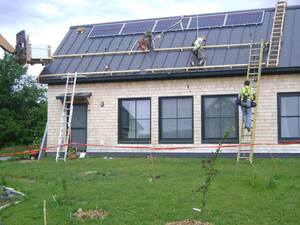 By Sarah Lozanova, Sustainability Writer Although you may dream of buying a hybrid or an electric vehicle, many of us have to drive the cars we already have, at least for the time being. Fortunately, there’s a lot you can do with driving habits and car maintenance to boost fuel economy and improve energy efficiency. Whether you want to save money or cut your carbon footprint (or ideally both!), check out these tips and learn to save green at the pump. 1. Use Your Brakes Sparingly Yes, they are a great invention, and safe driving practices involve using your brakes. Although there is certainly a time and place for applying the brakes, they can also be overused. Let the car coast before approaching stop signs, stoplights and congested areas where you will likely need to slow down. Your gas tank loves it when you lay off both the accelerator and the brake, as it saves a lot of gas. Laying off the brakes saves gasoline because most cars merely waste energy when the brakes are applied. Some cars, such as the Toyota Prius, have regenerative braking systems that capture some of the kinetic energy and transfer it to the battery, but such systems aren’t completely efficient. 2. Roll Up the Windows at High Speeds Rolling down the windows makes your car less aerodynamic, causing it to consume more fuel. This is true at all speeds, but even more so at high speeds. The exact numbers vary by the car, but the air conditioning is usually more efficient than rolling down the windows at speeds above 60 miles per hour. At lower speeds, it saves energy to roll down the windows and turn off the air conditioner, according to Popular Mechanics.  By Sarah Lozanova, Solar Energy Writer Solar power is now the fastest-growing energy source. In fact, an estimated 500,000 solar panels were installed globally every day in 2015. A typical American home requires 28 to 34 solar panels to produce 100 percent of its energy consumption. As the solar energy industry grows, there is a looming waste management issue. What will happen to the millions and millions of solar panels that are dotting rooftops across the globe at the end of their useful lives? Few Solar Panel Recycling Options Exist Now At the moment, most countries do not have a robust recycling infrastructure in place for solar panels. Most of the solar panels that are disposed of each year are damaged or defective. Because solar is a relatively young industry, few systems are being decommissioned each year. The design life of a solar panel is roughly 20 to 30 years, and most solar panel manufacturers provide a performance guarantee to protect solar system owners. Solar panels become less efficient over time, and performance guarantees protects consumers if the energy production declines prematurely. The guarantee offers solar homeowners peace of mind that the solar panels will generate a certain amount of power, barring unexpectedly cloudy weather. Many manufacturers guarantee 90 percent production after 10 years and 85 percent after 25 years. Most of the systems installed in the 1980s are still churning out an acceptable amount of power, so solar panel recycling hasn’t become very widespread. The day will come, however, when a robust recycling infrastructure will be needed because more solar systems will be decommissioned. Read More... Image Credit: Yan Lozanov |